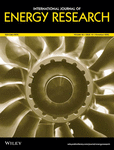Numerical investigation of single junction environmental friendly double perovskite (Cs2AuBiCl6) solar cell with 20.5% power conversion efficiency and negligible hysteresis
Summary
Organometal halide perovskite (OHP) has drawn extensive research interest because of its high efficiency, cheap cost, and facile production procedure. However, the commercialization of OHP is still limited owing to its unstable behaviour in open-air conditions and toxicity due to the presence of lead in commonly used methyalammonium lead perovskite. The mismatch between the current density and voltage curves concerning the scan direction, also known as J-V hysteresis, is one of the instabilities that creates a serious problem in the overall device performance in MAPbI3 bases perovskite solar cells. In this manuscript, all inorganic lead-free double perovskite-based solar cell is computationally simulated, and overall device performance is optimised using solar cell capacitance software. Proposed solar cell is composed of lead-free Cs2AuBiCl6 double perovskite as the main absorber material and Zn(O, S), CuSCN as an electron transport material and hole transport material, respectively. Due to its high absorption coefficient (≈105 cm−1) and low reflectance, Cs2AuBiCl6 is investigated as a lead-free double perovskite substitute for OHP. The layered architecture consists of FTO/Zn(O, S)/ Cs2AuBiCl6/CuSCN/Au is optimised by varying the thickness of the absorber layer, the defect density of main absorber layer, interfacial defect and operating temperature. Once the device is optimised, then J-V hysteresis is performed using two different defect model-based strategies. Simulation finding gives decent power conversion efficiency of 20.5% with almost negligible hysteresis. These simulation-based studies on Cs2AuBiCl6 will give guidance for designing and developing a high-efficiency eco-friendly lead-free perovskite solar cell as an alternative to traditional lead-based perovskite solar cells.
Open Research
DATA AVAILABILITY STATEMENT
The data that support the findings of this study are available on request from the corresponding author.




